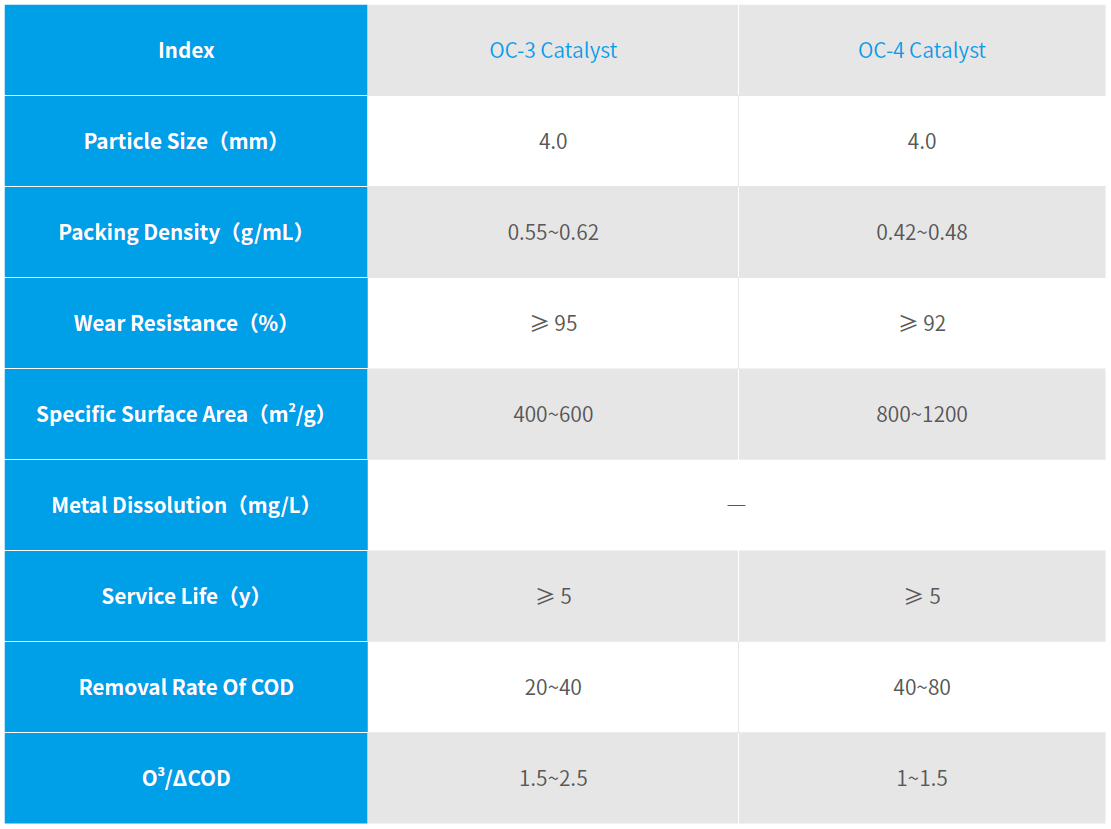Products & Technologies
The catalytic ozonation is a process that the ozone is converted to hydroxyl radical (·OH, oxidation potential 2.80V, ranking only second to fluorine) with stronger oxidizability at ambient temperature and pressure to further oxidize and decompose organic pollutants in water, or break macromolecular organic pollutants into small molecules by oxidation to improve the biodegradability of the wastewater. Compared with the similar products in the market, which are featured with low efficiency, easy dissolution and instability, ozone-catalyzed oxidation catalyst developed by OriginWater, with independent intellectual property rights, is featured with strong adaptability, high removal rate, short retention time, low operating cost , etc. Thus, it is in leading level in the industry.
High catalytic activity: Super large specific surface area of carrier, ternary formulation system for transition metal, rare earth metals and auxiliaries, concerted catalysis, efficiently generation of hydroxyl radicals;
Long service life: Due to in-situ high-temperature sintering process (> 1000 ℃ ), the active component is firmly bound to the carbon carrier, no heavy metal dissolves in effluent, the life is more than 5 years;
Low operation cost: Ozone dosage is less than 1.5mg/L per 1mg/L COD reduction;
Short retention time: The retention time of catalyst bed is short to obviously reduce the catalyst usage and total footprint.


